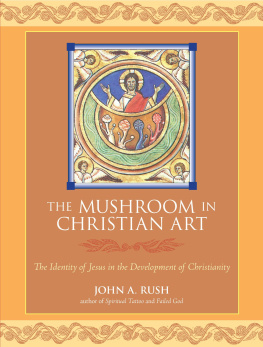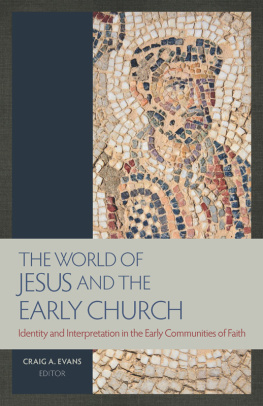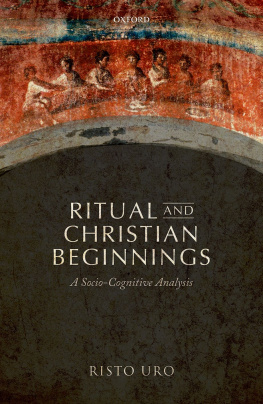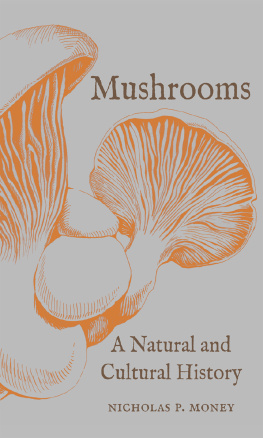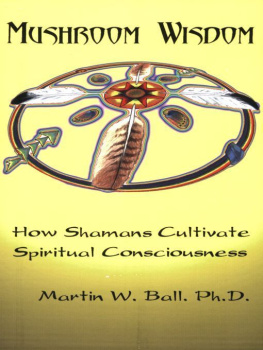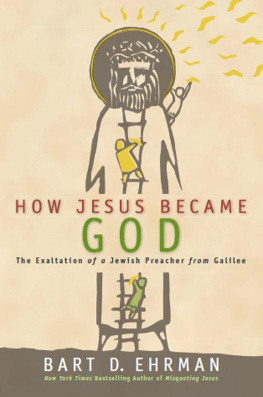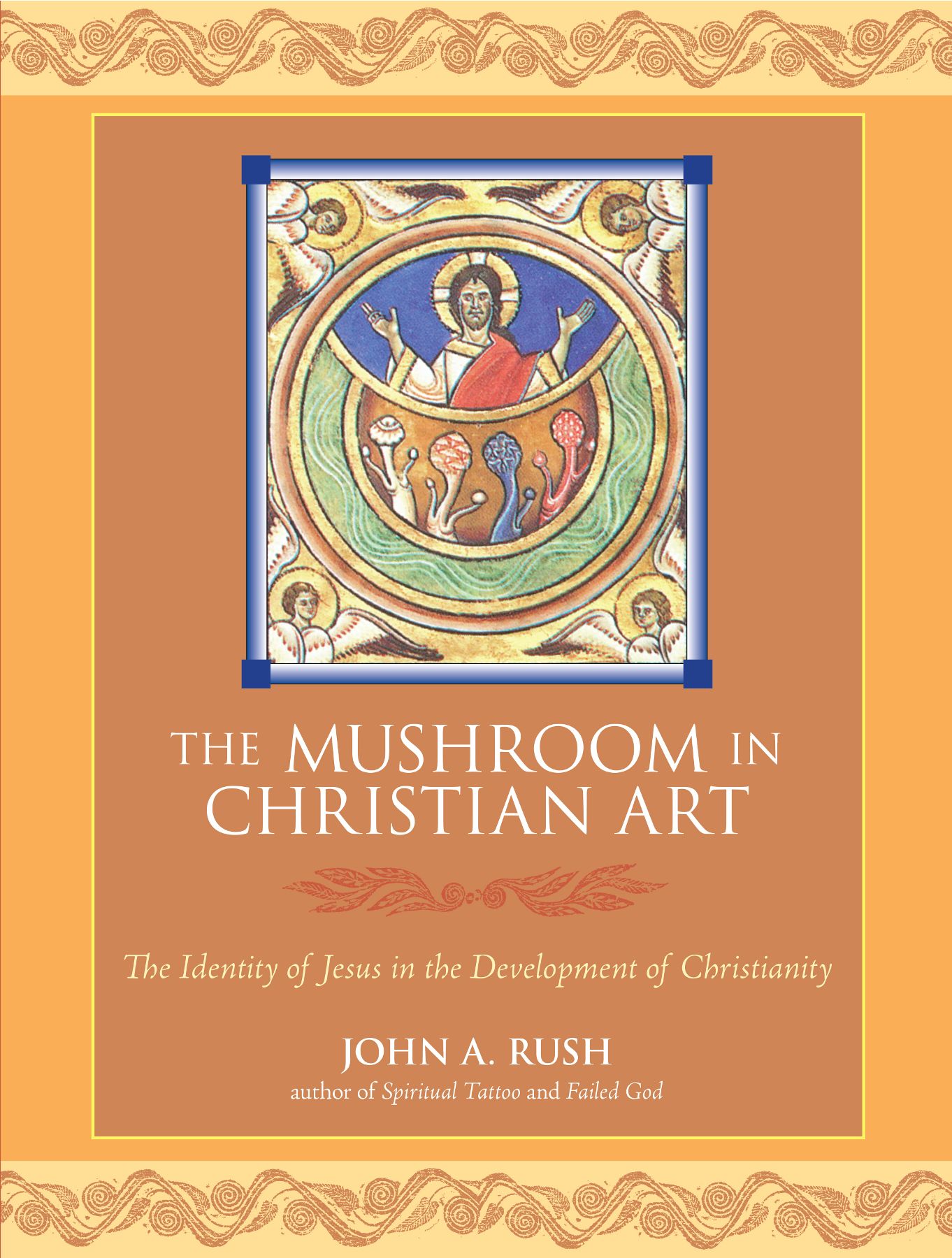
The Mushroom in Christian Art
Other books by John A. Rush
Witchcraft and Sorcery: An Anthropological Perspective of the Occult
The Way We Communicate
Clinical Anthropology: An Application of Anthropological Concepts within Clinical Settings
Stress and Emotional Health: Applications of Clinical Anthropology
Spiritual Tattoo: A Cultural History of Tattooing, Piercing, Scarification, Branding, and Implants
The Twelve Gates: A Spiritual Passage through the Egyptian Book of the Dead
Failed God: Fractured Myth in a Fragile World
The Mushroom in Christian Art
The Identity of Jesus in the Development of Christianity
John A. Rush
Foreword by Martin W. Ball, PhD

North Atlantic Books
Berkeley, California
Copyright 2011 by John A. Rush. All rights reserved. No portion of this book, except for brief review, may be reproduced, stored in a retrieval system, or transmitted in any form or by any meanselectronic, mechanical, photocopying, recording, or otherwisewithout the written permission of the publisher. For information contact North Atlantic Books.
Published by
North Atlantic Books
Berkeley, California
Cover design by Suzanne Albertson
: art Solrunn Nes. Used by permission.
The Mushroom in Christian Art: The Identity of Jesus in the Development of Christianity is sponsored and published by the Society for the Study of Native Arts and Sciences (dba North Atlantic Books), an educational nonprofit based in Berkeley, California, that collaborates with partners to develop cross-cultural perspectives, nurture holistic views of art, science, the humanities, and healing, and seed personal and global transformation by publishing work on the relationship of body, spirit, and nature.
North Atlantic Books publications are available through most bookstores. For further information, visit our Web site at www.northatlanticbooks.com or call 800-733-3000.
ISBN (e-book): 978-1-62317-400-2
Library of Congress Cataloging-in-Publication Data
Rush, John A.
The mushroom in Christian art : the identity of Jesus in the development of Christianity / John A. Rush ; foreword by Martin W. Ball.
p. cm.
Includes bibliographical references and index.
Summary: The Mushroom in Christian Art analyzes the prevalence of certain themesparticularly the mushroomin Christian art and explains how these images led to the construction of Christianity and the Catholic ChurchProvided by publisher.
ISBN 978-1-55643-960-5
1. Christian art and symbolism. 2. MushroomsReligious aspectsChristianity. 3. Jesus ChristPerson and offices. I. Title. II. Title: Identity of Jesus in the development of Christianity.
N8180.R87 2011
704.9482dc22 2010030470
Table of Contents
All images can be viewed at www.clinicalanthropology.com
When Dr. John Rush published his book Failed God, he mentioned in a personal conversation that he had asked several Christian art historians about the curious presence of mushrooms in Christian art. The response he was given by all he asked was the same: there were no mushrooms in Christian art. Dr. Rushs latest book, The Mushroom in Christian Art: The Identity of Jesus in the Development of Christianity, proves this statement to be profoundly mistaken. While some of the mushrooms presented here are open to interpretation, there are more than enough unambiguous examples to demand an explanation. For many, the explanation will be shocking, but as with any theory, it is its ability to account for the data that matters most, not whether it fits ones preconceived notions or long-held beliefs.
The explanation that Dr. Rush provides is not necessarily new, as it has been with us since at least the time of John Marco Allegros work, but it gains tremendous support due to his original research and his meticulous analysis of Christian art. The explanation for the preponderance of mushrooms in Christian art hinges on the very identity of Christianitys central figure: Jesus Christ. In The Mushroom in Christian Art, Dr. Rush provides a compelling argument that Jesus was never an actual, historical person, but rather was understood by early Christians to literally be the mystical experience occasioned by the ingestion of entheogenic and psychedelic plants and fungi. Quite simply, Jesus is the mushroom experience, and this fact is depicted in several stylized, and sometimes literal, ways in Christian art.
Such an interpretation does not come from the analysis of a few, anomalous pieces of Christian art. Rather, Dr. Rush documents consistent iconographic and stylistic features of Christian art that are unique to the religious art of their time periods (and that do not appear in secular art), which both openly and covertly represent mushrooms and entheogenic experiences. Along with analysis of the art, Dr. Rush carefully reads Christian documents and texts in combination with shifting dogmas and political realities to see how the myth of Jesus as a person became a reality for Christians while the truth of the real Jesus and the genuine sacrament of entheogenic substances was secreted away into esoteric rituals for elite initiates.
As enthnobotanical research progresses, and the body of scholarship on the foods of the Gods grows, it is becoming ever more apparent that entheogenic substances have played a far more central role in most religious traditions than most modern believers are ready to accept. The more we learn about religion in the ancient world, the more connections we find to ingestion of special substances that help bring initiates into direct contact with the sacred, however that is conceived or characterized. With so much demonization of drugs in the modern world, many find the connection between psychedelics and religion to be bordering on blasphemy, if not worse. Yet these are modern attitudes and should not be projected onto humanitys past, where psychedelic substances played a central role in virtually all major religions, and continue to do so today in countless indigenous traditions and cultures.
Dr. Rushs analysis of Christianity as being entheogen-based actually serves to bring greater relevance and meaning to the Christian religion. On the one hand, we have a clearly irrational faith-based system of mythological thinking, one based on archaic projections of a divine judge and savior, that has little relevance to the modern world. On the other hand, we have a tradition of direct experience of union with the divine where the mythology and imagery are not to be taken literally, but personally and spiritually. One is a dogmatic belief system that engenders violence, fear, competition, and a life-denying wish for the apocalyptic End Times, and the other is an experiential practice of coming to know the genuine nature of God through embracing the infinite power of life that exists within each individual and can be accessed through entheogenic sacraments. The contrast is stark and compelling. What if, at the heart of Christianity, there is a very different message for humanity?
Part of Dr. Rushs critique of Christianity as it is commonly practiced today is that it has opted for an irrational belief in mythology over actual spiritual experience. In his words, it has been constructed as a political, as opposed to spiritual, system. This shift, Dr. Rush claims, can be seen in the art. The earliest Christian art never depicted Jesus, and it wasnt until Jesus was declared fully God and fully Human by decree that we start to see actual images of Jesus Christ in the art. Yet even then, the mushrooms and iconic representations of the mushroom experience remain concealed within the art, right up to the present time. The Hand of God reaches down from the sky, bringing mushrooms. Adam and Eve eat of the forbidden fruit, clearly in the form of mushrooms. Red disks with white spots, curiously reminiscent of the distinctive cap of the
Next page
